|
 Dog Soldiers: They have barrelled into the fiercest battles of history. They have risked their lives for fallen comrades. They have remained loyal until death – guarding, encouraging, fighting until all, but their spirit, was lost. Dogs have certainly proved effective in battles throughout history. As weapons of wars they have been ferocious, courageous and intelligent. But it is their spirit, that undying and ever-faithful spirit that has inspired men in arms and rallied them during history’s bloodiest battles. When their effectiveness as weapons of war past they continued contributing to the fight – guarding the men, inspiring them, helping them to communicate. Dog Soldiers: They have barrelled into the fiercest battles of history. They have risked their lives for fallen comrades. They have remained loyal until death – guarding, encouraging, fighting until all, but their spirit, was lost. Dogs have certainly proved effective in battles throughout history. As weapons of wars they have been ferocious, courageous and intelligent. But it is their spirit, that undying and ever-faithful spirit that has inspired men in arms and rallied them during history’s bloodiest battles. When their effectiveness as weapons of war past they continued contributing to the fight – guarding the men, inspiring them, helping them to communicate.
Aim to Please: Perhaps it is their pack nature or willingness to please their human counterparts that have made them so essential in battle, but since the dawn of warfare they have plunged headfirst into the fight. The Romans were not the first, but may very well have used war dogs the most effectively. The Roman Army had whole companies composed entirely of dogs. They wore spiked collars around their neck and ankles, made more dangerous by the large curved knives protruding from its ring. Sometimes they were starved before battle, then unleashed on an unsuspecting enemy. Their dog of choice was the great Molossian dogs of Epirus, specifically trained for battle. These dogs, halved starved and ferocious, helped spread the Roman Empire across the ancient world. They dominated battles until they meet their match in the Britain, where powerful Mastiffs called Pugnaces Britanniae had been born and breed.
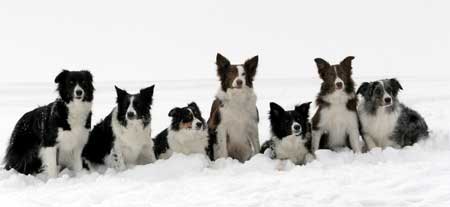
Born to Win: Gratius Falsius, an ancient Roman author and historian, wrote of these frightful canines in the 8 AD. They were physically unspectacular, but renowned and feared on the battlefield. The Roman Molossians were no match. Gratius writes, “Although the British dogs are distinguished neither by color nor good anatomy, I could not find any particular faults with them. When grim work must be done, when special pluck is needed, when Mars summons us to battle most extreme, then the powerful Molossus will please you less and the Athamanen dog cannot measure up to the skill of the British dog either. ”
Seeing first hand their effectiveness in battle, the Romans quickly began employing these dogs in the Empire’s service. They were set loose across the ancient world - trained, ravenous, and fiercely loyal.
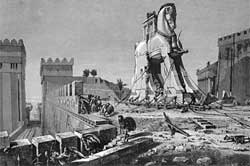 An Age Old Battle: Before the Romans, the Egyptians, Greeks, and Babylonians all employed fierce fighting dogs in battle. Hammurabi, the sixth king of Babylon, equipped his soldiers with huge war dogs. In Egypt, murals dating back to perhaps 4000 BC commemorate the fighting spirit of dogs in battle. They show vicious animals unleashed by their soldier-masters and leaping upon their feeble enemies. A war dog was also immortalized in a mural depicting the great Battle of Marathon. An Age Old Battle: Before the Romans, the Egyptians, Greeks, and Babylonians all employed fierce fighting dogs in battle. Hammurabi, the sixth king of Babylon, equipped his soldiers with huge war dogs. In Egypt, murals dating back to perhaps 4000 BC commemorate the fighting spirit of dogs in battle. They show vicious animals unleashed by their soldier-masters and leaping upon their feeble enemies. A war dog was also immortalized in a mural depicting the great Battle of Marathon.
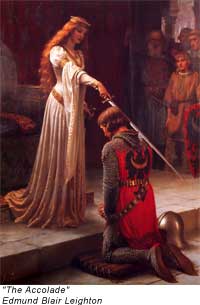 Faithful Hounds: After the fall of Rome, armies across the globe continued using war dogs, but no longer limited their service to fighting. They were trained as guard dogs, sentries, messengers and draught dogs. Medieval knights draped their faithful hounds in chain mail and plunged into battle with the dogs by their side. At death, the knights, who loved the dogs dearly, had an image of these faithful hounds inscribed on their tombs, linking the two forever. Faithful Hounds: After the fall of Rome, armies across the globe continued using war dogs, but no longer limited their service to fighting. They were trained as guard dogs, sentries, messengers and draught dogs. Medieval knights draped their faithful hounds in chain mail and plunged into battle with the dogs by their side. At death, the knights, who loved the dogs dearly, had an image of these faithful hounds inscribed on their tombs, linking the two forever.
Charles V of Spain used 400 mastiffs to drive the English from the field in the Siege of Valencia. So heroic was their conduct that Charles held all the dogs up as an example of honor and courage. William the Conqueror, Queen Elizabeth, and Edward Longshanks all utilized the dogs to defend the crown. Even Napoleon unleashed fighting dogs in front of his reserves. After the Battle of Marengo, he wrote, "I walked over the battlefield and saw among the slain, a poodle killed bestowing a last lick upon his dead friend's face. Never had anything on any of my battlefields caused me a like emotion."
A Whole New World: As Europeans expanded into the New World, so did their dogs. Dogs were used, especially by the Spaniards, against Native Americans, who in turn used dogs for their own purposes. And our own Founding Fathers saw the effectiveness of dogs in battle and used them whenever they could. The first mention of them comes in the 2nd Seminole War, where 33 Cuban-bred bloodhounds were used by the U.S. army to track Seminole Indians and runaway slaves throughout the swamps of western Florida and Louisiana.
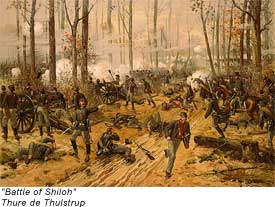 Although certainly used savagely and for dishonorable purposes, dogs were still able to inspire men and women through their courage and faithfulness. During the Civil War, a woman named Mrs. Pfieff left her home in Illinois to find the remains of her husband, Lt. Louis Pfieff of the 3rd Illinois Infantry, who had died on the battlefield of Shiloh. When she arrived, no one knew for certain the final resting place of her beloved husband. She was undeterred and trekked through the battlefield for clues. Her perseverance was rewarded when she saw her husband’s faithful dog, who he had brought along with him, walking towards her. She embraced the dog and hid her facing, sobbing, in his fine coat. The dog tried to led her somewhere and she, knowing the dog’s devotion, followed. The dog led her to an unmarked grave, which she uncovered and discovered the remains of her late husband. She learned later that the dog had stood by the grave for 12 days, leaving only for food and water. Although certainly used savagely and for dishonorable purposes, dogs were still able to inspire men and women through their courage and faithfulness. During the Civil War, a woman named Mrs. Pfieff left her home in Illinois to find the remains of her husband, Lt. Louis Pfieff of the 3rd Illinois Infantry, who had died on the battlefield of Shiloh. When she arrived, no one knew for certain the final resting place of her beloved husband. She was undeterred and trekked through the battlefield for clues. Her perseverance was rewarded when she saw her husband’s faithful dog, who he had brought along with him, walking towards her. She embraced the dog and hid her facing, sobbing, in his fine coat. The dog tried to led her somewhere and she, knowing the dog’s devotion, followed. The dog led her to an unmarked grave, which she uncovered and discovered the remains of her late husband. She learned later that the dog had stood by the grave for 12 days, leaving only for food and water.
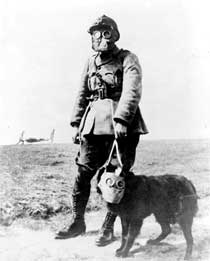 A New Era: In the modern era, essentially every nation used dogs in wartime. Like the ancient Romans, the Soviets starved dogs then unleashed them onto the battlefield. They trained the dogs to search for food beneath tanks. During battle the were strapped with anti-tank bombs and, after being unleashed, they sprinted beneath enemy tanks, with both tragic and heroic results. A New Era: In the modern era, essentially every nation used dogs in wartime. Like the ancient Romans, the Soviets starved dogs then unleashed them onto the battlefield. They trained the dogs to search for food beneath tanks. During battle the were strapped with anti-tank bombs and, after being unleashed, they sprinted beneath enemy tanks, with both tragic and heroic results.
During World War I, the Germans used possibly 30,000 dogs, the French used 20,000, and the Italians 3,000. The other Allied forces used thousands more. The U.S. did not use war dogs but sort of borrowed some from their Allies. By World War II however they had become convinced of a dog’s effectiveness in war.
Dogs for Defense: Dogs for Defense was created in January 1942 and used as a sort of clearinghouse for military dogs. Dogs that volunteered for service would be send to Dogs for Defense where they would be trained and prepared for battle. Thousands of dogs were eventually used by the U.S. Military in their efforts to defeat the Axis powers.
One of the most famous was Chips. This German Shepherd-Collie-Husky mix was the most decorated dog during World War II. Trained in Front Royal, Virginia, Chips served the 3d Infantry Division in North Africa, Sicily, Italy, France and Germany as a sentry dog. In 1943, he attacked a small fort and, in spite of receiving wounds to the head, forced 4 Italian crew members to surrender. Later on the same day, he helped capture 10 prisoners. For his actions he was later awarded the Silver Star and Purple Heart, although both were later revoked.
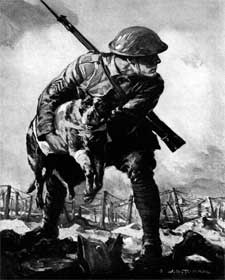 Always Faithful: 25 Marine War Dogs gave their lives liberating Guam in 1944 and many more served as sentries, messengers, and scouts, exploring caves, detecting mines and booby traps, and bringing vital information across the battlefield. A statue was erected in their honor. The inscription on the statue perhaps sums up the efforts of these dogs and war dogs throughout history. “Given in their memory and on behalf of the surviving men of the 2nd and 3rd Marine War Dogs Platoons, many of whom owe their lives to the bravery and sacrifice of these gallant animals..."Always Faithful" was inspired by the spirit of these heroic dogs who are the embodiment of love and devotion.” Always Faithful: 25 Marine War Dogs gave their lives liberating Guam in 1944 and many more served as sentries, messengers, and scouts, exploring caves, detecting mines and booby traps, and bringing vital information across the battlefield. A statue was erected in their honor. The inscription on the statue perhaps sums up the efforts of these dogs and war dogs throughout history. “Given in their memory and on behalf of the surviving men of the 2nd and 3rd Marine War Dogs Platoons, many of whom owe their lives to the bravery and sacrifice of these gallant animals..."Always Faithful" was inspired by the spirit of these heroic dogs who are the embodiment of love and devotion.”
|
